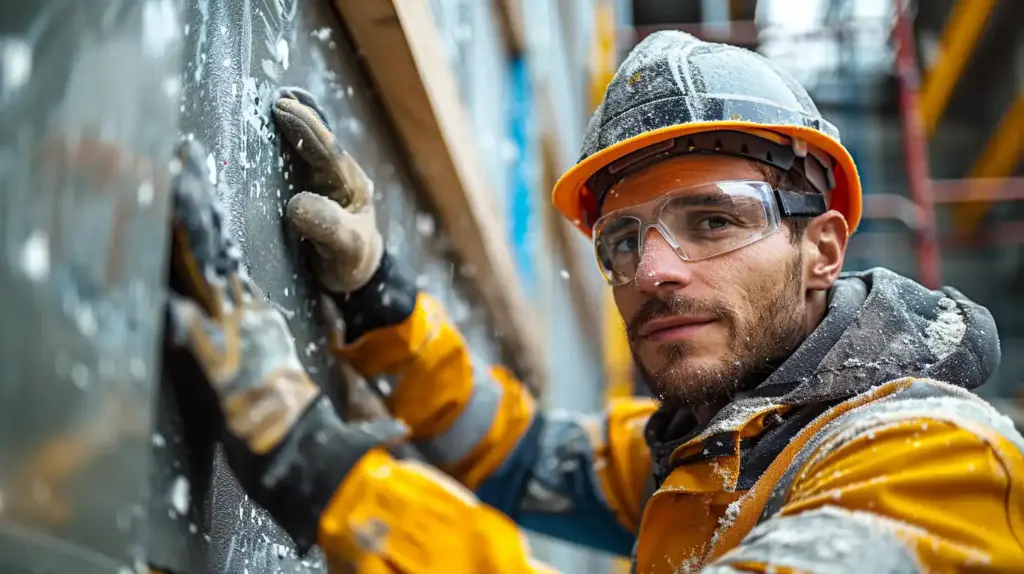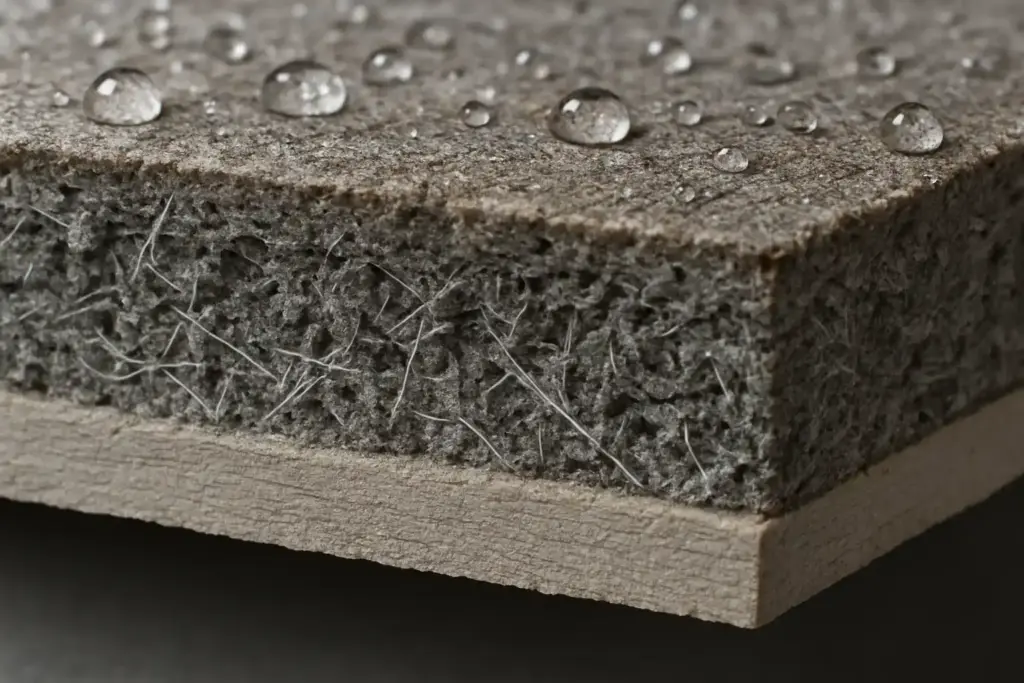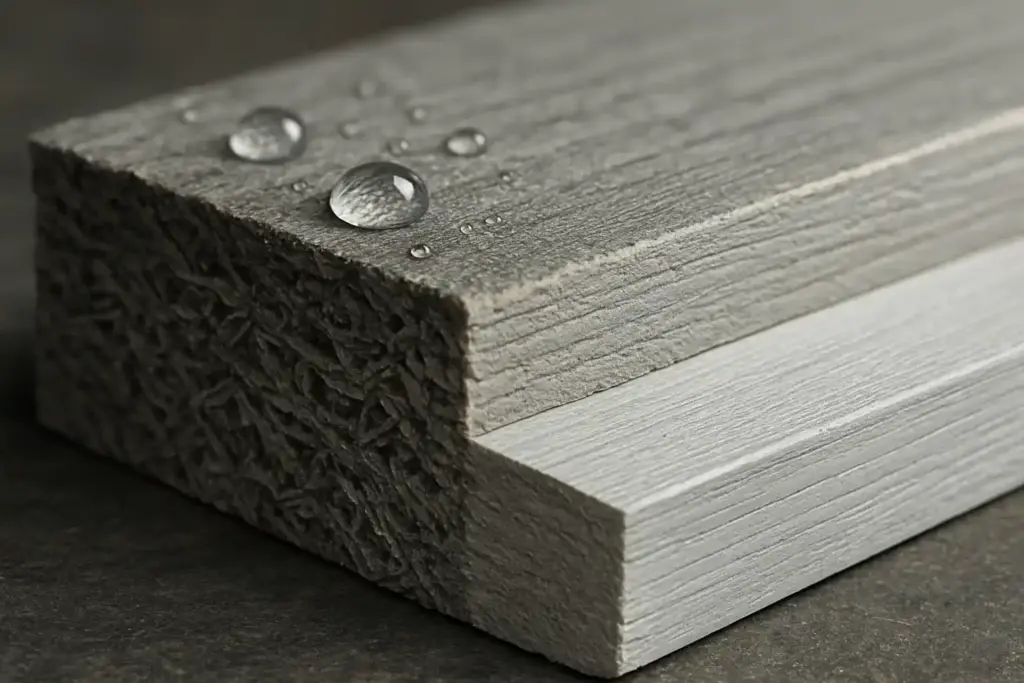Fiber cement siding has revolutionized the residential exterior market by combining the aesthetic appeal of traditional materials with engineered performance that surpasses natural alternatives. This innovative composite material offers homeowners an exceptional balance of durability, beauty, and long-term value that makes it increasingly popular across diverse climate zones and architectural styles.
Understanding Fiber Cement Siding Technology
Composition and Manufacturing
Fiber cement siding consists of carefully engineered blend of Portland cement, ground sand, cellulose fibers, and water. This combination creates a dense, stable material that hardens through curing processes that develop strength and weather resistance over time.
Primary Components:
- Portland Cement: Provides structural strength and weather resistance
- Silica Sand: Adds density and dimensional stability
- Cellulose Fibers: Contribute flexibility and crack resistance
- Water: Activates cement binding and enables proper curing
Manufacturing Process: Advanced manufacturing techniques ensure consistent quality through automated mixing, forming, pressing, and curing cycles that create uniform products with predictable performance characteristics.

Product Variations and Styles
Available Profiles:
- Lap Siding: Traditional horizontal installation patterns
- Shake Panels: Cedar shake aesthetic without maintenance concerns
- Panel Systems: Large format options for contemporary designs
- Vertical Siding: Modern architectural applications
- Trim Components: Integrated systems for complete exterior solutions
Surface Textures:
- Smooth Finish: Clean, contemporary appearance
- Wood Grain: Natural texture replication
- Cedar Mill: Authentic cedar shake appearance
- Stucco Texture: Mediterranean and southwestern styles
Advantages of Fiber Cement Siding
Superior Durability Performance
Weather Resistance: Fiber cement excels in extreme weather conditions, resisting damage from hail, wind, rain, and temperature fluctuations that can compromise other siding materials. This engineered stability maintains appearance and structural integrity across decades of service.
Fire Safety Excellence: Non-combustible composition provides Class A fire rating, offering superior protection in wildfire-prone areas and potentially reducing homeowner insurance premiums.
Pest and Rot Immunity: Unlike wood siding, fiber cement cannot be damaged by termites, carpenter ants, or moisture-related decay, eliminating costly repairs and ongoing pest management concerns.
Impact Resistance: Dense composition resists dents and cracks from hail, debris, and accidental impacts that can damage vinyl, aluminum, or wood siding systems.
Aesthetic and Design Benefits
Color Retention Technology: Factory-applied ColorPlus technology by James Hardie and similar systems from other manufacturers provide fade-resistant finishes that maintain appearance for 15+ years without repainting requirements.
Architectural Versatility: Wide range of profiles, textures, and colors accommodates diverse architectural styles from traditional farmhouse to contemporary minimalist designs.
Authentic Appearance: Advanced texturing techniques create realistic wood grain, cedar shake, and other natural material appearances without associated maintenance requirements.
Long-Term Value Proposition
Extended Lifespan: Properly installed fiber cement siding typically lasts 30-50 years, significantly exceeding vinyl (20-30 years) and wood siding (15-25 years) service life expectations.
Warranty Coverage: Leading manufacturers provide comprehensive warranties covering materials and finish performance, with some offering 30-year non-prorated coverage.
Property Value Enhancement: Fiber cement siding installation typically recovers 75-85% of project costs in increased property value while providing immediate curb appeal improvements.


Fiber Cement vs. Alternative Siding Materials
Vinyl Siding Comparison
Performance Advantages:
- Fire Resistance: Non-combustible vs. melting/ignition concerns
- Impact Resistance: Superior dent and crack resistance
- Temperature Stability: Minimal expansion/contraction vs. significant movement
- Appearance Quality: Authentic textures vs. artificial appearance
Cost Considerations: Fiber cement installation costs 40-70% more than vinyl initially but provides superior longevity and requires less frequent replacement.
Wood Siding Comparison
Maintenance Benefits:
- Painting Requirements: 15-20 year intervals vs. 3-5 years for wood
- Pest Protection: Immune to insect damage unlike natural wood
- Moisture Resistance: No warping, splitting, or rot concerns
- Dimensional Stability: Consistent appearance without seasonal movement
Aesthetic Comparison: Modern fiber cement textures closely replicate natural wood grain while eliminating ongoing maintenance and weather damage concerns.
Metal Siding Comparison
Design Flexibility:
- Color Options: Extensive palette vs. limited metal finishes
- Installation Methods: Standard carpentry techniques vs. specialized metal installation
- Repair Accessibility: Easy field repairs vs. panel replacement requirements
- Architectural Integration: Better compatibility with traditional home styles
Installation Requirements and Considerations
Professional Installation Necessity
Fiber cement siding installation requires specialized knowledge, tools, and techniques that make professional installation essential for warranty compliance and optimal performance.
Required Tools:
- Specialized Saws: Dust collection systems for silica safety
- Pneumatic Nailers: Proper fastener placement and depth
- Measuring Equipment: Precision cutting and fitting tools
- Safety Equipment: Respiratory protection during cutting operations
Installation Complexity:
- Weight Considerations: Heavier than vinyl requiring proper support
- Cutting Requirements: Specialized techniques for clean edges
- Fastening Specifications: Precise nail placement and spacing
- Flashing Integration: Critical moisture management details
Critical Installation Details
Moisture Management: Proper installation includes comprehensive moisture barrier systems, appropriate flashing details, and ventilation planning that prevents water infiltration and ensures long-term performance.
Thermal Movement: While more stable than vinyl, fiber cement still requires proper expansion joints and installation techniques that accommodate seasonal movement without compromising weather sealing.
Fastener Requirements: Specific nail types, placement patterns, and depth requirements ensure secure attachment while preventing face nailing that can compromise appearance and performance.
Cost Analysis and Investment Planning
Material and Installation Costs
National Cost Ranges (2025):
- Material Costs: $3.50-6.50 per square foot
- Installation Labor: $4.00-7.50 per square foot
- Total Installed Cost: $7.50-14.00 per square foot
Project Size Impact:
- 1,500 sq ft home: $11,250-21,000 total
- 2,000 sq ft home: $15,000-28,000 total
- 2,500 sq ft home: $18,750-35,000 total
Cost Comparison Analysis
Fiber Cement vs. Vinyl:
- Initial Premium: 40-70% higher upfront investment
- Lifespan Advantage: 50-100% longer service life
- Lifecycle Value: Superior long-term cost per year of service
Fiber Cement vs. Wood:
- Comparable Initial Cost: Similar upfront investment for quality wood
- Maintenance Savings: Significant ongoing cost reductions
- Insurance Benefits: Potential premium reductions for fire resistance
Return on Investment
Property Value Impact: Studies consistently show fiber cement siding projects recover 75-85% of costs in increased property values, outperforming most other exterior improvements.
Energy Efficiency Benefits: When combined with continuous insulation systems, fiber cement installations can reduce heating and cooling costs while qualifying for energy efficiency rebates.
Maintenance Requirements and Long-Term Care
Routine Maintenance Protocols
Annual Inspection:
- Caulk and Sealant Condition: Check and maintain weather sealing
- Fastener Security: Verify nail heads and replace as needed
- Surface Cleaning: Remove dirt, mildew, and organic growth
- Trim and Joint Inspection: Ensure proper sealing and alignment
Periodic Maintenance:
- Painting Schedule: 15-20 year intervals for field-painted products
- Caulk Replacement: 10-15 year intervals for expansion joints
- Hardware Updates: Replace worn or damaged accessories
Cleaning and Care Procedures
Standard Cleaning: Regular washing with mild detergent and water maintains appearance and prevents organic growth that can cause staining or surface degradation.
Pressure Washing Guidelines: Low-pressure washing (under 1500 PSI) with appropriate nozzle distance prevents damage while effectively removing accumulated dirt and debris.
Stain and Mildew Treatment: Specialized cleaning solutions address specific staining issues without damaging factory finishes or underlying material composition.
Popular Brands and Product Selection
James Hardie Leadership
Market Dominance: James Hardie commands approximately 75% of North American fiber cement market share through consistent innovation and quality assurance programs.
Product Lines:
- HardiePlank: Traditional lap siding profiles
- HardieShingle: Cedar shake alternatives
- HardiePanel: Vertical and large format options
- ColorPlus Technology: Factory-applied finish systems
Alternative Manufacturers
CertainTeed Weatherboards: Competitive pricing with solid warranty coverage and growing market presence, particularly in commercial applications.
Allura Fiber Cement: Focus on premium residential markets with enhanced color and texture options for luxury applications.
Nichiha Fiber Cement: Japanese engineering with emphasis on precision manufacturing and dimensional accuracy.
Climate Suitability and Regional Performance
Performance Across Climate Zones
Humid Climates: Excellent moisture resistance prevents warping, rot, and pest damage common in southeastern and coastal regions.
Arid Climates: Superior UV resistance and dimensional stability outperform vinyl and wood in southwestern desert conditions.
Cold Climates: Freeze-thaw resistance and minimal thermal movement provide reliable performance in northern regions with temperature extremes.
Coastal Environments: Salt air resistance and wind load capacity make fiber cement ideal for oceanfront and lakefront properties.
Regional Installation Considerations
Hurricane Zones: High wind ratings and impact resistance provide superior storm protection compared to traditional siding materials.
Wildfire Areas: Class A fire ratings and non-combustible composition offer enhanced protection in fire-prone regions.
Seismic Zones: Flexible fastening systems and engineered installation details accommodate seismic movement without compromising weather protection.
Professional Installation Benefits
Achieving optimal fiber cement siding performance requires experienced installation teams familiar with manufacturer specifications and best practices. Professional Siding contractors ensure proper installation techniques that maximize material warranties while delivering superior long-term performance and aesthetic results.
Installation Quality Factors
Manufacturer Certification: Many contractors pursue manufacturer training programs that ensure installation expertise and qualify for enhanced warranty coverage.
Specialized Equipment: Professional teams invest in specialized tools and safety equipment necessary for efficient, safe fiber cement installation.
Quality Assurance: Experienced contractors implement systematic quality checks throughout installation processes to ensure consistent results and warranty compliance.
Environmental Considerations and Sustainability
Eco-Friendly Attributes
Recycled Content: Many fiber cement products incorporate recycled materials while maintaining performance standards and reducing environmental impact.
Manufacturing Efficiency: Advanced production processes minimize waste and energy consumption while maximizing material consistency and quality.
Longevity Benefits: Extended service life reduces replacement frequency, minimizing long-term environmental impact compared to shorter-lived alternatives.
Indoor Air Quality
Low Emissions: Cured fiber cement products emit minimal VOCs, contributing to healthier indoor air quality compared to some synthetic alternatives.
Chemical Stability: Inorganic composition prevents outgassing and degradation that can affect indoor environmental quality over time.
Future Trends and Innovations
Technology Advancement
Enhanced Finishes: Continued development of factory-applied finishes extends color retention and reduces maintenance requirements while expanding design options.
Installation Improvements: Lighter-weight formulations and improved fastening systems simplify installation while maintaining performance advantages.
Smart Integration: Future products may incorporate sensors or smart technology for performance monitoring and maintenance optimization.
Making the Right Choice for Your Home
Fiber cement siding represents an exceptional balance of performance, aesthetics, and value for homeowners seeking long-term exterior solutions. While initial investment exceeds vinyl alternatives, superior durability, minimal maintenance requirements, and enhanced property value make fiber cement an intelligent choice for quality-focused homeowners.
Whether renovating a historic property or building a contemporary home, fiber cement siding provides design flexibility, weather protection, and peace of mind that justifies its premium positioning in the residential siding market. The combination of engineered performance and natural appearance creates exterior solutions that satisfy both practical requirements and aesthetic aspirations.
By understanding fiber cement advantages, installation requirements, and long-term benefits, homeowners can make informed decisions that enhance their properties while providing decades of reliable protection and beauty.

